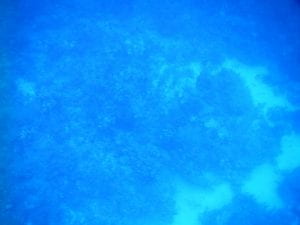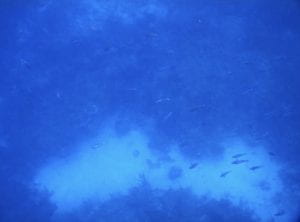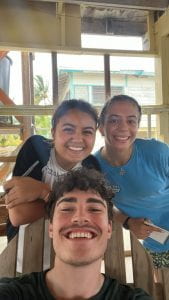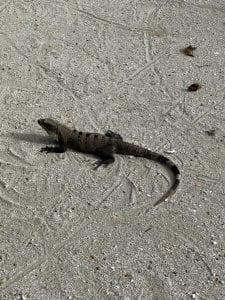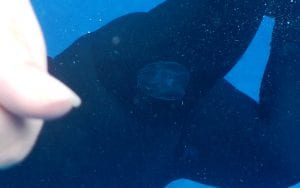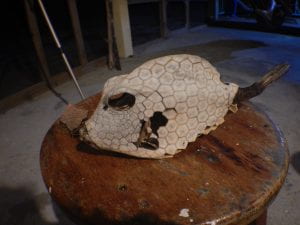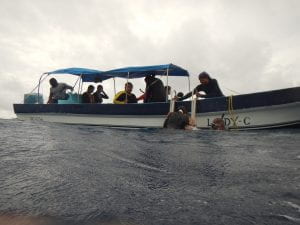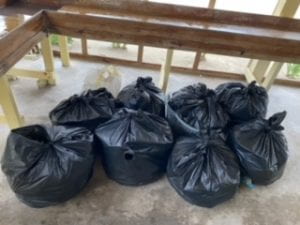After checking the weather report, this morning was the best chance we had to go and see the forereef. The forereef is the region of the barrier of coral around the atoll that is facing the open ocean. Outside of the protection of the wall, the ocean waves are far more intense. The boat ride over was a tad more nauseating than others, and the swells were quite an intimidating sight to see before jumping in. However, once in the water, the waves were far less burdensome than I expected. The water was significantly deeper than any other region we have been before. The reef was ~70’ down, but it boarded a significant drop far deeper than I could see. There was a beautiful school of blue fish that we were able to swim through, and the water was littered with small translucent and barely glowing ctenophore. There were massive colonies of stony corals just below us. I would imagine they’re many of the same species I encountered in the lagoon, but were able to grow to larger scales because of the deeper conditions. In the shallow patch reefs, the corals have to contend with very bright light, harsh UV, and warmer temperatures. Yet although these colonies were larger, there were still obvious signs of disease. The distance was too far to see any detail, but the lesions were quite evident from above. I truly love how throughout this trip we continue to explore new places each time.
After returning back to land, we worked to clean up debris from some of the beaches of the island. Although messy, we collected, sorted, and analyzed the trash which accumulates on the shores. The debris either has to be disposed of on-site or shipped back to land, and it was quite interesting to learn that they burn everything possible (including plastic). Between this activity and Nate’s excellent talk describing marine debris, it left me questioning my participation in convenience consumerism. Every toothbrush, bottle cap, plastic container, bag, and more will continue to persist in the environment for hundreds of years. In this afternoon’s lecture, a chart showing the largest marine plastic polluting countries in the world were not the largest plastic consumers. The west appears to have superior management of waste, yet western countries continue to ship single-use plastic waste to other regions of the world for “recycling.” Yet in many of these cases, it’s this plastic that is ending up in the oceans. So who is truly to blame? The countries where the trash is released into waterways due to relatively poor management, or the western countries which ship their waste out of sight with the facade of recycling to lessen the social shame of convenience consumerism.
Just before dinner, we saw the rare sight of a hermit crab changing shells. Watching it shift its squirmy shrimp-like body from one shell to another was fascinating yet a bit unnerving. During dinner, one of our Marine Safety Officers Ruth gave us an in-depth information session about Belizean history and her career path to being here helping us. It was super fun, and I hope to find a career I am in love with like she is with hers. But on that note, I am now questioning what aspect of biology I want to pursue. I have always planned on going into medicine, but my experience during college has pushed me towards a love of research. I understand that most research is not like this, out on a gorgeous island, yet I wonder if research overall is something I would rather do than dermatology. Studying papers and information about coral diseases was a great time, and I think fulfilled much of the same curiosity I am hoping to satisfy with a career in medicine. But understandably no one wants a truly creative doctor, as medicine has some pretty ridged defined boundaries for most disciplines. Yet the goal of research itself is to push our current boundary of knowledge and make the unknown known. Depending on how the rest of my time at Rice goes, I could see what I thought as my career path shift in the direction of scientific and/or pre-clinical research. Overall, this class continues to be an incredible and influential experience.
~Rusty
